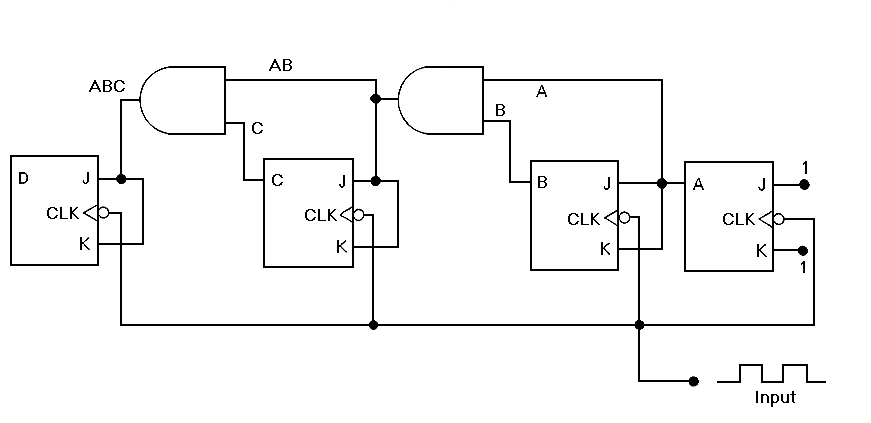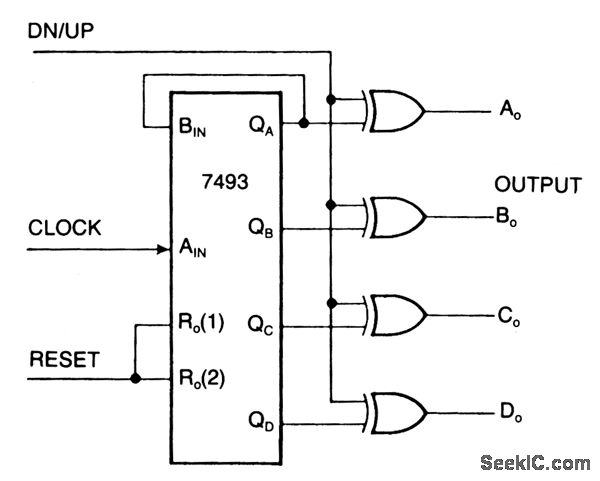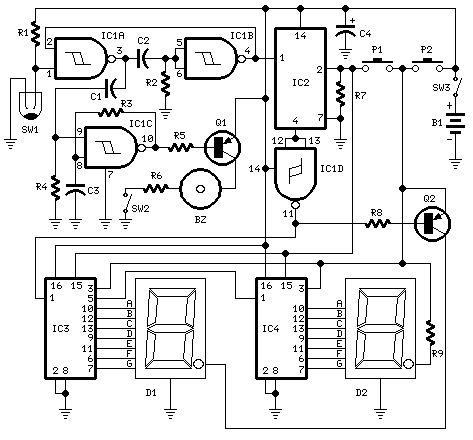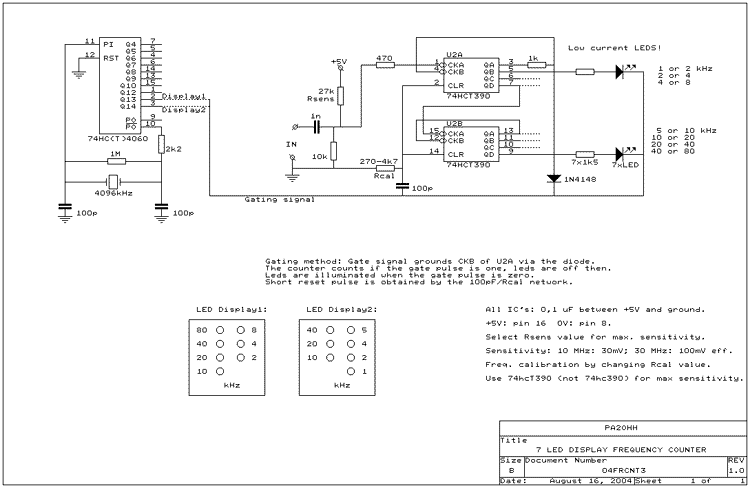
MULTIDIGIT DEMONSTRATION COUNTER
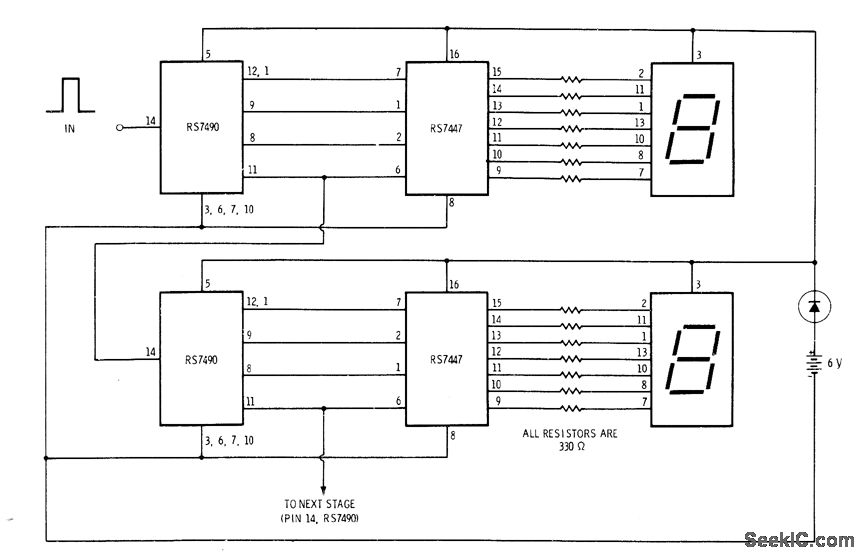
A simple interconnection of the RS7490 decade counter, RS7447 decoder, and a 7-segment digital display for each desired digit creates an ideal counter for classroom demonstrations and science fair exhibits. With the addition of two extra stages, the display can count up to 9999 before recycling. It is recommended to use a 1N914 diode in series with the battery to protect against polarity reversal. Additionally, the supply voltage should be reduced to 5 V for the integrated circuits.
The described circuit utilizes the RS7490 decade counter, which is capable of counting from 0 to 9 in binary form. This counter is connected to the RS7447 BCD to 7-segment decoder/driver, which translates the binary output into a format suitable for driving a 7-segment display. Each segment of the display is activated according to the output from the decoder, allowing for a visual representation of the counted number.
To extend the counting capability to 9999, two additional RS7490 counters can be cascaded. The output of the first counter can be connected to the clock input of the second counter, effectively allowing the first counter to count the tens while the second counts the units. This configuration enables the entire system to display numbers from 0000 to 9999.
Protection against reverse polarity is crucial in this setup to prevent damage to the integrated circuits. The inclusion of a 1N914 diode in series with the power supply ensures that current flows in the correct direction, safeguarding the components from potential harm.
For optimal performance, the supply voltage should be set to 5 V, which is the standard operating voltage for many integrated circuits, including the RS7490 and RS7447. This voltage level helps maintain the reliability and functionality of the circuit during operation.
Overall, this simple yet effective counter circuit serves as an excellent educational tool, demonstrating fundamental concepts in digital electronics and providing a hands-on experience in building and understanding counting systems.Simple interconnection of RS7490 decade counter RS7447 decoder, and 7-segment digital display for each desired digit makes ideal counter for classroom demonstrations and Sci-ence Fair exhibits, With two additional stages added, display reaches 9999 before recycling. Use 1N914 diode in series with battery to protect against polarity reversal and reduce supply to 5 V for ICs F. M. Mims, "Integrated Circuit Projects, vol. 6, "Radio Shack, Fort Worth, TX, 1977, p53 63. 🔗 External reference
The described circuit utilizes the RS7490 decade counter, which is capable of counting from 0 to 9 in binary form. This counter is connected to the RS7447 BCD to 7-segment decoder/driver, which translates the binary output into a format suitable for driving a 7-segment display. Each segment of the display is activated according to the output from the decoder, allowing for a visual representation of the counted number.
To extend the counting capability to 9999, two additional RS7490 counters can be cascaded. The output of the first counter can be connected to the clock input of the second counter, effectively allowing the first counter to count the tens while the second counts the units. This configuration enables the entire system to display numbers from 0000 to 9999.
Protection against reverse polarity is crucial in this setup to prevent damage to the integrated circuits. The inclusion of a 1N914 diode in series with the power supply ensures that current flows in the correct direction, safeguarding the components from potential harm.
For optimal performance, the supply voltage should be set to 5 V, which is the standard operating voltage for many integrated circuits, including the RS7490 and RS7447. This voltage level helps maintain the reliability and functionality of the circuit during operation.
Overall, this simple yet effective counter circuit serves as an excellent educational tool, demonstrating fundamental concepts in digital electronics and providing a hands-on experience in building and understanding counting systems.Simple interconnection of RS7490 decade counter RS7447 decoder, and 7-segment digital display for each desired digit makes ideal counter for classroom demonstrations and Sci-ence Fair exhibits, With two additional stages added, display reaches 9999 before recycling. Use 1N914 diode in series with battery to protect against polarity reversal and reduce supply to 5 V for ICs F. M. Mims, "Integrated Circuit Projects, vol. 6, "Radio Shack, Fort Worth, TX, 1977, p53 63. 🔗 External reference

